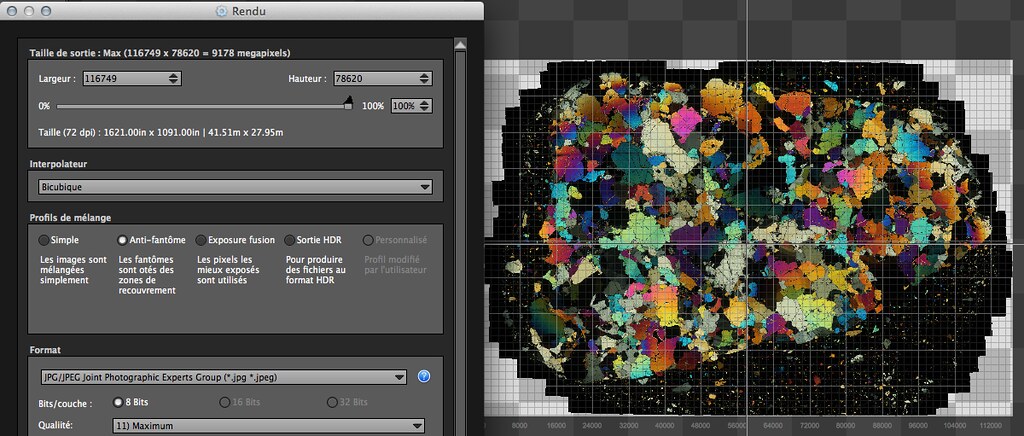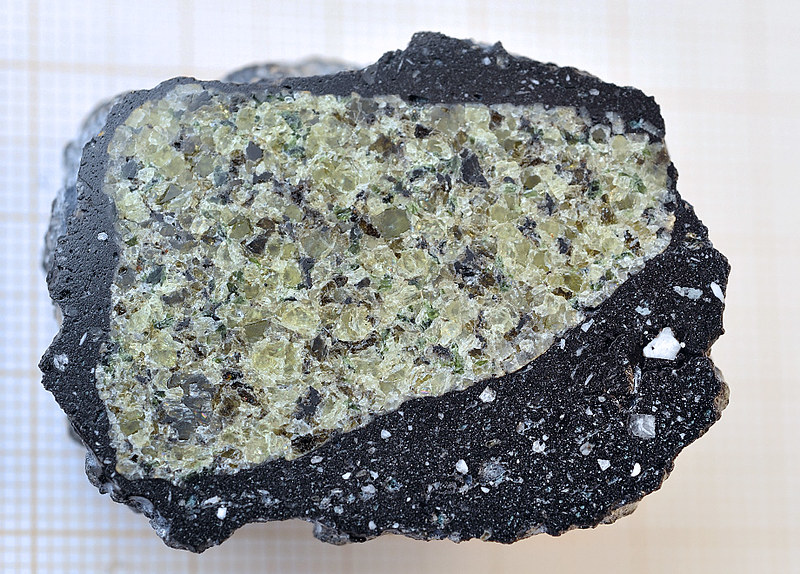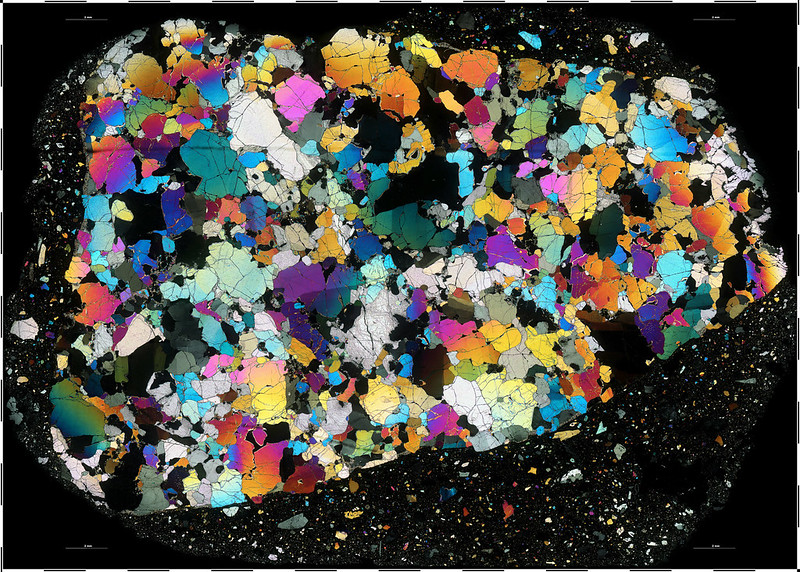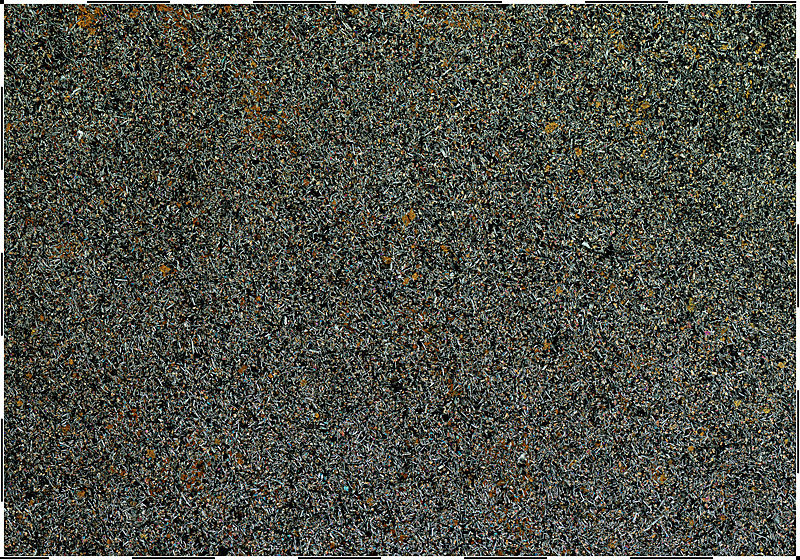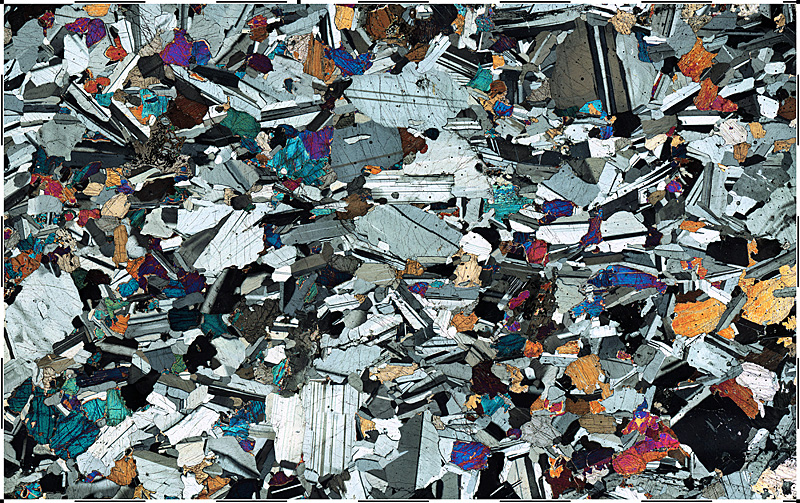As biology/geology teacher, I have to show some rocks in different aspects.
Naked eye... episcopy... microscopy.
To identify the minerals we use analyzed thin sections of rock, observed in polarized/analized light.
Example 1 : grand mother of all rocks
Macro of "chondrite" - all planets are made with this kind of rocks (meteorites)
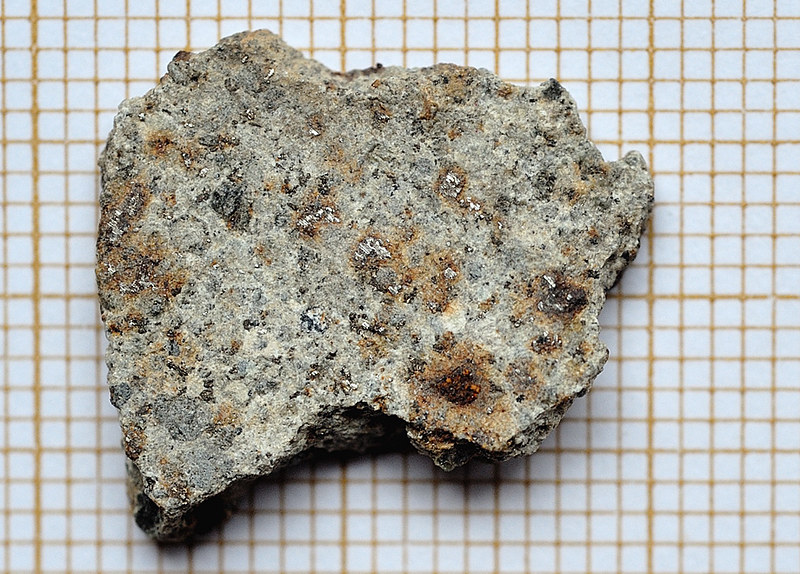
A slide made with this meteorite
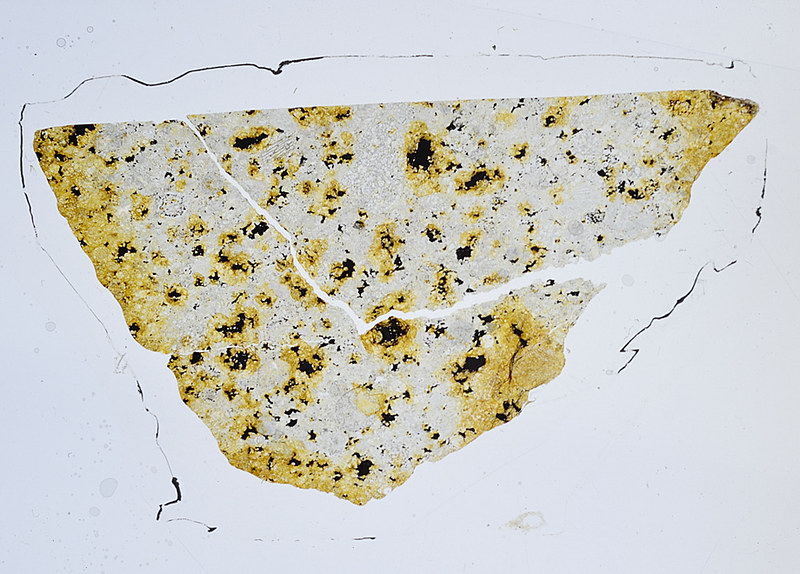
When you took a single shot with your microscope (BH2 - SPlan 4x + NFK 2,5x), you obtained a very small part of the slide.
So I decided to increase the shots, several hundred to cover the entire cut.
When all pictures are stitched with AutoPano, the original size is near 100.000 pixels large - toshop and my Mac doesn't work with this kind of size. I reduced to 25/30 %.
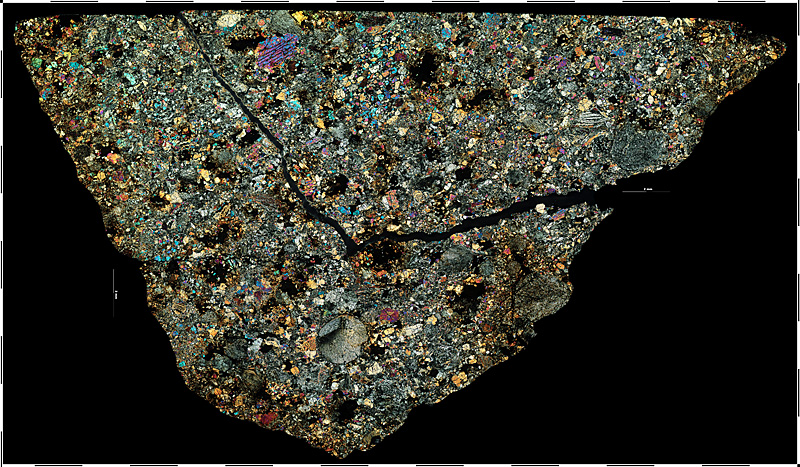
(each line - black or white - is 2 mm in reality - this picture @ 7000 pixels - HERE)
Another way to see this work with Zoomify
http://www.macromicrophoto.fr/petrograp ... drite.html
Another examples, next posts.



